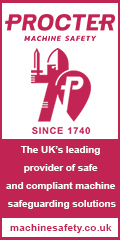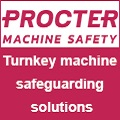
Posted to News on 8th Aug 2014, 10:19
Installing and operating electric motors
Motors are the workhorses of industry, so commonplace that they are often taken for granted. Now, with the world economy growing and new regulations about energy efficiency coming in, many users will be installing new motors over the next few years. Lucie Hodkova of Rotor UK offers this checklist of things to remember when dealing with new motors.
- Get expert advice on selecting new motors, even if it seems a straightforward choice. If you are considering a like-for-like swap-out, new legislation about energy efficiency and safety means you may need a different type of motor. It may be worth exploring the options for say oversized bearings, special lubricants, a two-speed motor or other variants on standard motors.
- Use a creditable supplier. This will ensure on-time delivery, the correct specification and a quality product. It is worth remembering that if a motor's price is too good to be true, something - either quality or service - will probably suffer.
- In the past OEMs could get away with cheap motors, so long as they lasted through the warranty period! But most of the world has moved on from there - if a motor fails now, the OEM could be facing a legally enforceable claim for lost production.
- When your motor is delivered, check it through for signs of damage. Something apparently inconsequential, such as scratched paint or damaged packaging, may be indicative of bigger internal problems. You could try turning the shaft to make sure it is straight and free running, check that lubrication is in place (smaller motors) or provided separately (larger motors). The motor may have sat on a warehouse shelf for some time, so look for signs of rust, corrosion, dirt, moisture. Inspect the coils and insulation, looking for damage and misalignment.
- Also on delivery, check the boilerplate and paperwork and any labels affixed to the motor to make sure you have got exactly what you ordered. The paperwork may include notes on installation, maintenance, an invoice, technical drawings, etc. - these are usually important and should not be discarded.
- Larger motors are often shipped partly or wholly disassembled. Check that you have received all the parts and that they fit together properly.
- If you are not going to install the motor straightaway, make sure you have a safe, secure and dry place to store it.
- Most motors are heavier than they look, so handle them with care or risk injury. Treat them with respect: if they are knocked or dropped, the shaft or bearings may become misaligned, the coils could be damaged or the casing cracked. Use lifting bolts if they are provided. If the motor is delivered as part of a larger system (i.e. it has an attached load) make sure you lift it in such a way that they whole weight is supported.
- When it comes to installing the motor, you need to make sure that it is properly mounted, and that the holding bolts are secure. You should also check lubrication, alignment and electrical connections, multiple times each. It is good practice to stand back and look - does the motor look the right size? Does everything seem to be properly connected? Are the nuts and bolts all tightened? Are there any bits left over, especially nuts, bolts, washers or other seemingly unimportant parts?
- Next you should turn your attention to the driven machinery - gears, belts, couplings. Do all of these look right? Check tensions and alignments. Starting at the motor, go through each element of the drivetrain in turn, working out what will happen when it rotates; check that it is secure, free to rotate, is not going to foul anything, etc.
- Check, double- and treble-check that all guards and safety equipment are in place and secure
- Before start-up, run through all the relevant safety standards and regulations. Also, make sure all personnel are well clear at initial start up, just in case a part flies off!
- Industrial environments can be harsh, but always try to find a clean, dry, cool location for motors.
- Most motors will be operated within an enclosure for safety purposes. In industry, wire cage-type enclosures are popular because they do not trap heat around the motor, but if the general environment is damp or dirty a solid enclosure may be required, and this may need to have a cooling arrangement. Thinking about maintenance, enclosures need to be either removable or large enough to allow adequate access.
- It should be appreciated that motors can spark, so need to be isolated from combustible materials such as dust (settled and airborne) , lint, paper, textiles and oils. (This does not necessarily preclude the mounting of motors on wooden platforms or floors.)
- Motors generate heat, which must be managed. Many motor types have cooling fins, others have an integral forced draught fan (and cover, which must not be damaged). Larger motors may need additional ventilation or even water jacket cooling. Whatever the size, if a motor is in a confined space, heat can build up to potentially dangerous levels. The motor will have a specified safe maximum working temperature, which should be ascertained and respected.
- If the operating environment is permanently or intermittently damp, the motor will need protecting. Moisture is likely to encourage sparking, can rust metal parts and damage non-metal parts.
- Some motors have to be installed in outdoor or damp-prone locations, and it may be necessary to provide space heaters to prevent damp problems or drip proofing in the form of a roof-type cover.
- Seagoing and shoreside motors have a very tough life, and marine specification motors are the only real option.
- A hot working environment (above 40degC) will impact the motor's insulation and thereby shorten its maintenance period - and probably its overall working life. Hence, cooling facilities can be seen as a cost-effective investment.
- Rigid mountings are essential for minimum vibration and proper alignment between motor and load. Smaller motors are often mounted within a machine and will need anti-vibration mountings. Bigger motors may be skid-mounted and the largest motors are often mounted straight onto a concrete foundation. In all cases, both static and dynamic loads have to be accommodated for safe, secure mounting.
- The motor mount also has to be precise, with exact alignment to the load.
- The electrical connections to motors are fully specified in International Standards and should be followed to the letter. It is good practice to test the characteristics of the supply at the point of use. And the paperwork should provide detailed connection specification for each motor.
- It is important to check that the correct specification of cables is used. High-spec cables are far more expensive than "standard' cables, but do not be tempted to scrimp, as failure could be disastrous.
- Finally, it is always worth having each motor installation checked by at least one suitably qualified engineer. This should not be seen as demeaning to the installing engineer, but as a sensible, reasonable, cheap and effective double-check.
To learn more about installing new motors, please visit www.rotor.co.uk.
Want the latest machine building news straight to your inbox? Become a MachineBuilding member for free today >>
Unit 8, 16 Everitt Close
Denington Industrial Estate
NN8 2QF
UNITED KINGDOM
+44 (0)1933 230900

















